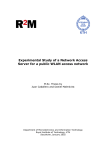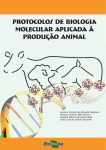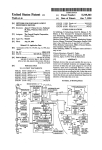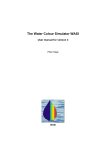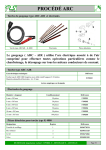Download The Use of Polilights in the Detection of Seminal Fluid
Transcript
TECHNICAL NOTE J Forensic Sci, March 2006, Vol. 51, No. 2 doi:10.1111/j.1556-4029.2006.00065.x Available online at: www.blackwell-synergy.com Nicholas Vandenberg,1 B.Sc. (Hons) and Roland A. H. van Oorschot,1 Ph.D. The Use of Polilights in the Detection of Seminal Fluid, Saliva, and Bloodstains and Comparison with Conventional Chemical-Based Screening Tests ABSTRACT: Biological stains can be difficult to detect at crime scenes or on items recovered from crime scenes. The use of a versatile light source may assist in their detection. The ability of Polilights to locate potential semen, saliva, and blood stains on a range of substrates and at different dilutions was tested. We also tested the use of Polilights in comparison with conventional chemical-based presumptive screening tests such as acid phosphatase (AP), Phadebass, and luminol, often used in casework for detecting potential semen, saliva, and blood stains, respectively. The Polilights was able to locate stains that were not apparent to the naked eye. The color of the material on which a stain is deposited can have an effect on the detectibility of the stain. The Polilights was found to be comparable with the AP and Phadebass tests in terms of its sensitivity. In a comparative study between the AP test and Polilights on 40 casework exhibits, one false-negative result was observed when using the Polilights. On a series of mock casework exhibits it was determined that the Polilights can be used successfully to locate saliva stains for DNA analysis. The sensitivity of luminol for detecting potential bloodstains was greater than that of Polilights; however the Polilights has particular application in instances where a bloodstain may have been concealed with paint. Overall, the Polilights is a relatively safe, simple, noninvasive, and nondestructive technique suitable for use in forensic casework. KEYWORDS: forensic science, forensic biology, alternate light source, Polilights, fluorescence, acid phosphatase, luminol, Phadebass Detection of seminal stains on items such as clothing and bedding can be of significance in sexual assault cases. Similarly, locating potential saliva or bloodstains on clothing or at crime scenes can also assist investigations. Polilights is a versatile light source that produces intense narrow bands of light, at wavelengths between 310 and 650 nm. Polilights has application in latent fingerprint detection (1) and may offer an alternative to other more commonly used chemical-based screening tests for biological fluids, such as the acid phosphatase (AP) test for seminal fluid, Phadebass paper for saliva, or luminol for blood. Polilights can potentially provide a rapid, less labor-intensive, presumptive screening test, particularly for large surfaces, before further tests are used to confirm the presence of spermatozoa or blood. In 1991, Stoilovic (1) demonstrated that the excitation spectrum of semen was broad (i.e., fluorescence could be generated using wavelengths from 300 to 480 nm) and that blood had a strong narrow absorption band around 415 nm. These properties of semen and blood can be exploited to enable their detection (1). However, to date, there remains an apparent dearth of literature on the application of alternate light sources (such as Polilights) for detecting biological fluid stains. One previous study, however, using a PL 10 (Rofin, Dingley, Australia) identified that the most significant factor in the detection of semen stains using fluorescence is the nature of the ma1 Victoria Police Forensic Services Center, Macleod, VIC 3085, Australia. Received 4 June 2005; and in revised form 5 Sept. 2005; accepted 1 Oct. 2005; published 13 Feb. 2006. Copyright r 2006 by American Academy of Forensic Sciences terial on which a stain may be deposited (2). This study reported a degree of difficulty in detecting seminal stains on materials that were either highly absorbent, dark colored or were made of material that itself demonstrated strong fluorescence (2). Further, it is known that brighteners in detergents and fabric conditioners can cause cloth to fluoresce under ultraviolet (UV) light, and that their effect is additive (3). Background fluorescence may potentially mask fluorescence from seminal stains. In the case of saliva stains, in particular, any improvement in the ability to target an area for DNA analysis would be an advantage in casework, especially if the examination can be performed by noninvasive/nondestructive means such as Polilights. Luminol is an extremely sensitive method for the detection of blood, but like Polilights it requires darkness and after application of the luminol reagent the chemiluminescent intensity diminishes over time, while repeated application may diffuse a bloodstain pattern on a nonporous surface (4). In this study, we used a Polilights (PL 500) (Rofin) to examine seminal stains, saliva stains, and bloodstains on a variety of materials of differing texture and color that are often observed as substrates in forensic casework. We test the degree of sensitivity that the Polilights possesses for detecting these stains by applying serial dilutions of seminal fluid, saliva, and blood onto known fabrics and examining the resultant stains under Polilights. We also examine the potential background effects of laundry detergents on selected materials, and the effects of washing these materials, under Polilights. The efficiency of the Polilights technique compared with the AP test was investigated by performing 361 362 JOURNAL OF FORENSIC SCIENCES the AP test on a number of casework samples that had firstly been examined by Polilights. Further, we attempted to recover DNA from saliva stains subsequent to these stains being identified using Polilights. This included the identification of saliva stains set up in mock caseworktype scenarios. The appearance of a variety of biological and nonbiological fluids under Polilights was examined, as were the effects of potentially interfering substances on the identification of bloodstains. Finally, a comparison was also made of the efficiency of the Polilights technique and the Phadebass test for detecting saliva stains. Materials and Methods Light Sources The Polilights used in this study was a PL 500 (Rofin). The light source for the PL 500 is a 500 W Xenon arc lamp. There are 12 wavelength settings available to choose from, ranging from 415 to 650 nm, also including white light and UV options. Bandwidths range from 100 nm for the 450 nm setting (blue light), commonly used for general screening, to 27 nm for the 555 nm band (green/orange light). The range of wavelengths allows for the fluorescence from seminal and saliva stains to be observed against a variety of backgrounds, including those that may themselves be fluorescent. The Polilights PL 500 has power and fine filter (i.e., wavelength) tuning options. In this study, the output power was set at P7; the fine filter tuning function was not utilized. Observation of Fluorescence Fluorescence is defined as the property of absorbing light of short wavelength and emitting light of longer wavelength. The fluorescence must be observed at a wavelength greater than the incident excitation light, and therefore a filter is required to screen out any reflected incident light or other competing light. To achieve this filtering effect, a series of different-colored goggles can be used. The shade of goggles worn (yellow, orange, red) becomes darker as the wavelength of incident excitation light is progressively shifted toward the longer wavelength end of the spectrum. These colored goggles are ‘‘long-pass’’ filters that let light through above a certain wavelength while cutting out light below that wavelength. The excitation spectrum of semen has been measured from 300 to 480 nm and does, in fact, stretch beyond 480 nm (1) and, as such, fluorescence from semen can be generated using wavelengths anywhere from 300 to 500 nm. The emission spectra for semen are also broad and cover the region from 400 to 700 nm (1). Studies on the fluorescent properties of saliva are limited. One study, which examined the fluorescence profile of saliva swabs from skin, reports an excitation peak for saliva at 282 nm (i.e., in the UV range), although excitation scans were only performed between 200 and 320 nm (5). However, another study (6) used an argon ion laser, which has a continuous wave operation of 454.5– 514.5 nm, to successfully locate semen and saliva stains on items of clothing. The excitation spectrum of saliva was not determined in this study, although fluorescence of saliva stains was achievable using excitation wavelengths higher than 320 nm, and although the success rate was relatively low for saliva (30%), it was still higher than when using UV light sources alone to detect saliva on these materials (21%). The higher success rate could be attributed in part to the laser’s higher intensity radiation (6). The excitation and emission spectra of blood, on the other hand, are well defined. Blood does not show significant fluorescence but does have a strong absorption band around 395–435 nm, with a maximum at 415 nm (1). Thus, the appearance of a bloodstain may be enhanced by the use of Polilights set to the 415 nm wavelength setting. Preparation of Stains Fresh seminal fluid, saliva, and blood were stained onto cotton swabs and a range of colored fabrics, including white-, yellow-, green-, red-, and blue-colored wool; white, black, yellow, pink, green, red, blue, brown, and purple cotton, as well as multicolored cotton and flannelette prints, checked, and polka-dot cotton weaves; white, pink, and blue nylon; white polyester, green polar fleece, blue velour, pink satin (polyester), and black crepe. Stains were also prepared on blends of fabrics such as black and white polyester/spandex, blue cotton/elastane fashion denim, white cotton/elastane boxer shorts, a white nylon/elastane bra, a black-and-white polyester/cotton T-shirt and on other materials including white and blue synthetic carpet, pine wood, dried leaves, and for seminal fluid only, a condom, and for blood only, glass, brick, metal, and plasterboard. Seminal fluid, saliva, and blood were collected and stored at 41C before use. Blood was collected in ethylene diamine tetraacetic acid tubes. A half milliliter of each fluid was placed on a sample of each material and left for 24 h to dry before being examined. The seminal and saliva stains were then examined at each of the 12 wavelength settings available (white light, UV, 415, 450, 470, 490, 505, 530, 555, 590, 620, and 650 nm) with the Polilights, while bloodstains were examined at 415 nm only. Serial Dilution of Seminal Fluid, Saliva, and Blood Serial dilutions of seminal fluid, saliva, and blood were performed using distilled water (dH2O) down to a concentration of 1:100,000 in a final volume of 500 mL. The dilution ratios tested were 1:2, 1:5, 1:10, 1:100, 1:1000, 1:10,000, 1:100,000. Undiluted samples were also prepared for comparison purposes. A preliminary study of seminal fluid, saliva, and blood on white wool, cotton, polyester, nylon, and paper showed that seminal fluid, saliva, and blood were least diffuse on polyester, nylon, and cotton, respectively. Hence, dilutions of seminal fluid, saliva, and blood were applied to individual samples of these fabrics, left to dry for 24 h (or 7 days in the case of blood to destroy any viruses that may be present) and then observed under Polilights. Samples of varying amounts of saliva and blood (50, 5 mL) were also applied to white nylon and white cloth, respectively, and observed under Polilights. Polilights vs. AP AP testing of 40 casework exhibits, after examination with Polilights, was performed in accordance with standard procedures within the Biology Division at the Victoria Police Forensic Services Laboratory. The results of both examinations were recorded along with case details. A positive control was tested before beginning the AP testing to ensure that the reagent was working properly. Effects of Laundry Detergents To examine the effect of liquid laundry detergents under Polilights, 2–3 mL of each detergent was placed onto individual VANDENBERG AND VAN OORSCHOT TABLE 1—Effect of washing with laundry detergents. Description of Stain on White Polyester s Preen Sards White Kings Earth Choices Omos Cold Powers Cuddlys (fabric softener) Seminal fluid control Stain Visible Under Polilights Before Washing After Washing Yes No No Yes Yes Yes Yes Yes Yes No No No No Yes No No samples of white polyester, allowed to dry for 24 h, and observed under Polilights. A list of the laundry detergents used is given in Table 1. The samples were then washed in warm or cold water, as specified by the instructions on the detergent label, and allowed to dry again for 24 h. No further detergent was added during washing. The samples were then observed again under Polilights. Comparison of Saliva and Blood to Other Fluids under Polilights A number of biological and nonbiological fluids were placed in different locations on a single piece of white nylon, and an attempt was made to differentiate them under Polilights. These fluids included 500 mL of saliva, blood, semen, urine, semen-free vaginal swabs (resuspended in dH20), tea, and nasal secretions (undetermined amount). Recovery of DNA from Saliva Stains Identified with Polilights To determine whether the Polilights could aid in the determination of which areas to target for DNA analysis, an attempt was made to identify prepared saliva stains using the Polilights. The prepared stains included a known amount of saliva (200 mL) applied to a known corner of a nylon square, an undetermined amount of saliva applied to a known corner of a second nylon square, and an undetermined amount of saliva placed in a corner of a third nylon square, where the corner chosen was not known to the person performing the Polilights examination/recovery of DNA. All undetermined amounts of saliva were deposited by an individual placing a corner of the nylon in their mouth for 3 min. The same individual’s saliva was used in all cases; this individual’s DNA profile was known, and to avoid possible contamination issues, this individual was not involved in the process of recovering the DNA. As a negative control, a sample was also taken of the opposite corner to the saliva applied to a known corner of the second nylon square. The tape lift technique was chosen as the means of recovering DNA, as would routinely be performed in casework in our forensic laboratory. This technique involves the repeat application of a section of tape to a surface area until the tape loses its stickiness, thereby concentrating trace amounts of material into a small area. Tape lifts of the saliva stains that were prepared on separate pieces of white nylon and examined under Polilights were then submitted for DNA analysis. DNA analysis was performed using the Chelexs extraction method (7). Extracted samples were quantitated using the Quantiblots method (Perkin Elmer, Foster City, CA), in order to determine the amount of DNA present. Amplification of extracted DNA was performed using the AmpFlSTRs Profiler PlusTM Amplification Kit (Applied Biosystems, Foster City, CA) on a PE 9600 under standard conditions (8). Where possible, 1 ng of the . THE DETECTION OF STAINS USING POLILIGHTs 363 total extracted DNA for a given sample was used in each amplification. Amplified samples (1 mL) were combined with an internal size standard (ROX 400-HD) and resolved on an ABI PRISMs 310 Genetic Analyser (Applied Biosystems). Polymerase chain reaction (PCR) fragment sizes were determined using GeneScan Analysis 3.1 software. Allelic assignment was made by reference to allelic ladders, using Genotyper version 2.5 software. A reagent blank for the extraction of DNA was also performed, along with positive and negative controls for amplification. Identification of Mock Casework Saliva Stains Using Polilights Mock casework saliva stains were also examined under Polilights. These stains were prepared in the following manner: tancolored nylon/elastane stockings were worn for 3 min as a mouth gag, a cream polyester/cotton pillow case was wrapped around a person’s face and held firmly in place for 3 min, a white polyester/ cotton T-shirt was spat on, a white nylon/elastane bra was licked and fingers that had been sucked on for 3 min were pressed down firmly on a pair of white cotton/elastane boxer shorts in an attempt to transfer saliva. An attempt was also made to recover DNA via the tape lift technique from an area identified under Polilights on the nylon/elastane stockings as a potential saliva stain, and DNA analysis was performed as above. Examination of the Effects of Potentially Interfering Substances, or Conditions, on the Identification of Bloodstains Using Polilights Bloodstains (500 mL) on white cotton cloth were mixed with a variety of substrates, or exposed to different environmental conditions, and examined under Polilights to assess the effects. These samples were prepared in the following manner: blood mixed with soil (0.25 g) and left to dry, blood mixed with rust (0.25 g) and left to dry, dried blood covered with white fingerprint powder (0.25 g), dried blood covered with black fingerprint powder (0.25 g), blood mixed with semen (250 mL each) and left to dry, blood mixed with saliva (250 mL each) and left to dry, dried blood stored at 371C for 4 weeks and a bloodstain stored for 15 years at ambient room temperature. A neat bloodstain (500 L) on white cotton cloth was also included for reference purposes. Loose soil, blood, and rust flakes were also prepared separately in a Petri dish for comparative purposes. Additionally, as part of the study on the effects of interfering substances, 0.5 mL dried bloodstains prepared on wood were successively painted over with either a white acrylic-based paint, or a white, light yellow, or dark green low-sheen water-based paint, using separate rollers for each stain/paint combination. Three coats were applied using the white paints, while only two coats were applied using the colored paints. The bloodstains were observed under Polilights after the application of each new coat of paint both when the paint was wet and dry. (Also, although 0.5 mL volumes of blood were used for each substrate/paint combination, small spots of blood ( 1–2 mm diameter) were made next to the 0.5 mL stains.) After observing the bloodstains under Polilights, a 5 5 mm sample of a bloodstain under two coats of the white water-based paint was cut out and subjected to DNA analysis. No attempt was made to scrape off, or otherwise separate, the bloodstain from the wood or the paint when sampling. For comparative purposes, a seminal stain was also painted over with three coats of the white acrylic-based paint and observed under Polilights. 364 JOURNAL OF FORENSIC SCIENCES Further, 0.5 mL bloodstains on brick, metal, and plasterboard were also painted over, using up to three coats of the white lowsheen water-based paint, and these stains were also observed under Polilights after the addition of each new coat of paint. Lastly, a bloodstain ‘‘sandwich’’ was prepared and observed under Polilights. The sandwich was prepared as follows: a piece of wood was first painted with white acrylic-based paint and allowed to dry; then, a 0.5 mL bloodstain was applied and left to dry before the bloodstain was painted over with another coat of the white acrylic-based paint. Comparison Between Polilights and the Phadebass Method for the Identification of Saliva The Phadebass method is a test for amylase activity, which is generally found at high levels in human saliva (9). Amylase activity may be absent in some people’s saliva and can be found in body fluids other than saliva; hence, the test is only presumptive. In this method, a dye linked to an insoluble substrate is rendered soluble by the action of the amylase enzyme. In this study, the method is performed using treated blotting paper. The paper is prepared as follows: Phadebass tablets (essentially blue starch) are dissolved in dH2O (0.9 g into 100 mL), and the solution is sprayed onto one side of a sheet of blotting paper. The treated paper has a speckled blue appearance. When dried, the paper is tested against a suspect stain by placing it face down on the stained area and wetting the back of the paper with dH2O. The location of the paper relative to the exhibit is marked, and a weight is used to ensure even contact. The reaction takes 45 min. A positive result appears as pale blue diffuse staining on the treated side of the paper, in the region corresponding to the location of the saliva stain, as opposed to negative areas, which retain the speckled blue background. The paper is dried again to better visualize any positive staining. When using each new piece of Phadebass paper, the corner of the treated side is folded over and a positive control is applied (50 mL neat saliva). Phadebass paper was used to identify the location of saliva stains on mock casework exhibits. As the Polilights method is noninvasive, the exhibits used were those previously prepared for analysis with the Polilights. The Phadebass method was also performed on a number of other biological fluid stains including 500 mL amounts of saliva, blood, semen-free vaginal swabs (resuspended in dH2O), semen, and urine, all dried on white nylon. FIG. 1—Seminal stain on a multicolored cotton print: (a) natural light and (b) 450 nm excitation, viewed through orange goggles. stains on the same type of material but of a different color were readily observed. Seminal fluid in a condom could also be observed (Fig. 3). Some difficulty was noted when attempting to observe seminal stains on checked fabric (data not shown). Saliva stains on pink nylon were difficult to detect (data not shown). Saliva staining on blue and white checked cotton weave could not be observed under Polilights compared with the same volume of saliva on a flannel alphabet print (Fig. 4). Results and Discussion Seminal Fluid, Saliva, and Bloodstains on Various Materials The most useful general condition for observing fluorescence of seminal or saliva stains on various materials using the Polilights was with the wavelength set to 450 nm, while wearing orange goggles. Other useful wavelengths/combinations of goggles were 415 nm/yellow goggles, for stains on dark-colored materials, and 505 nm/red, to reduce background emissions for garments that demonstrate high background fluorescence (i.e., to maximize contrast). The Polilights is suitable for detecting seminal and saliva stains on a range of materials, including wool, cotton, nylon, polyester, and blends (e.g., cotton/polyester), where the stain is not apparent to the naked eye under natural light (Fig. 1). The color of the material was found to affect the strength of the stain’s appearance. Seminal stains on pink nylon, red cotton, and pink cotton polka dot are difficult to detect (Fig. 2). However, seminal FIG. 2—Seminal stain on pink cotton/white polka dot at 450 nm excitation, viewed through orange goggles. VANDENBERG AND VAN OORSCHOT . THE DETECTION OF STAINS USING POLILIGHTs 365 FIG. 3—Seminal fluid in a condom at 450 nm excitation, viewed through orange goggles: (Top) used condom; (Bottom) unused, unrolled condom. The narrow absorption band for blood dictates that the most functional wavelength setting to use for bloodstains is 415 nm with yellow goggles. Under Polilights, the majority of bloodstains on the various materials tested were easily detectable at this wavelength, with the exception of a bloodstain on green polar fleece. For seminal stains, the variability resulting from the degree of absorbency of materials was not as apparent using Polilights as reported previously in other studies (2). For example, we found that seminal stains on highly absorbent blue velour and dark green polar fleece were easily detectable with Polilights, although not as apparent to the naked eye under normal light (Fig. 5). Seminal stains observed with Polilights on material that appeared to have very little absorbency, such as nylon (where the stain appeared to sit on the surface of the fabric), did not appear to be significantly greater in intensity than seminal stains on more absorbent material (e.g., cotton, polyester) (data not shown). However, for saliva and bloodstains, absorbency of the material appears to be a factor. Saliva stains that sat on top of a surface gave better results than saliva stains for the same material that appeared to have mostly been absorbed into the fabric. A bloodstain on highly absorbent polar fleece also gave a poor result (data not shown). Kobus et al. FIG. 4—Saliva stains on cloth at 450 nm excitation, viewed through orange goggles: (Left) blue and white checked cotton weave; (Right) multicolored flannelette alphabet print. FIG. 5—Seminal stain on green polyester polar fleece: (a) natural light and (b) 450 nm excitation, viewed through orange goggles. (2) used Rhodamine 6G to investigate the effects of absorption on fluorescence and found fleecy fabrics to be very absorbent/poorly fluorescent. Serial Dilution of Seminal Fluid, Saliva, and Blood The sensitivity of the Polilights was investigated in dilution experiments. It was found that seminal stains on white polyester could be readily observed with the Polilights when the seminal fluid was diluted down to as little as a 1 part in 100. Interestingly, it is the edges of a seminal stain that remain visible at the lower concentrations: this may be a useful visual guide when examining casework exhibits (Fig. 6). A previous study (10) has reported visible seminal stains on cotton, under Polilights, at dilutions greater than 1:25, where these same stains were not visible without the aid of a light source. By comparison, the detection limit for AP in seminal stains has been reported at a dilution of 1/100 (11). The possibility exists that a seminal stain on a casework exhibit might become diluted through washing or rain or simply through coming into contact with another surface, which could then absorb part or all of the stain. It should be noted that a seminal stain that becomes diluted may be different in appearance to seminal fluid that is diluted before becoming a stain. We found that gentle cold water machine washing (without detergent) of a seminal stain on white polyester produces a negative result with Polilights, suggesting that the fluorescent properties of semen may be completely removed from the fabric by simple washing. Further, it is known that it is possible to still obtain a weak AP result from seminal stains on fabric machine washed in cold water without a detergent (12). However, another study has reported weak 366 JOURNAL OF FORENSIC SCIENCES FIG. 6—Diluted seminal fluid on white polyester at 450 nm excitation, viewed through orange goggles. Clockwise from top left; 1:1000, 1:100, 1:10, 1:5, 1:2, neat semen. looking in appearance and not as solid or discrete as a neat seminal stain typically appears. The results of this experiment are also supported by observations made in analyzing casework exhibits with Polilights, where numerous small white ‘‘background’’ stains that were not observed under natural light were observed on garments under Polilights and recorded as ‘‘possible’’ stains. It may be that some of these ‘‘background’’ stains were caused by brighteners in detergents and fabric conditioners. Given that the fluorescent effects of brighteners are accumulative, it seems reasonable to assume that ‘‘background’’ stains would be more common on undergarments or light-colored clothing, as one would generally expect these items to be washed more often. In other instances, stains observed on casework exhibits under Polilights corresponded to pre-existing stains visible on the garment under natural light (and could be ruled out as seminal fluid stains). Examples of substances that fluoresce under Polilights and may appear as stains on a garment under natural light include urea, grease, lipstick, and ink (15). Polilights vs. AP fluorescence from a seminal stain that was AP negative after washing with a detergent (2). Saliva stains of varying amounts on white nylon were examined under Polilights (450 nm/orange goggles). At this wavelength, saliva stains were detectable down to the smallest amount tested: 5 mL. The serial dilution of saliva on nylon showed that saliva is detectable down to a 1:10 dilution under Polilights. The edges of the stains are strongest and appear white. Under natural light, these same saliva stains are not visible below a 1:2 dilution. Ray (10) also reported that, using a Polilights, saliva stains on cotton at dilutions of 1:10 were visible, while without the Polilights even neat saliva stains were not visible. Bloodstains of varying amounts on white cotton were examined under Polilights (415 nm/yellow goggles). At this wavelength bloodstains were detectable down to the smallest amount tested: 5 mL. The serial dilution of blood on cotton showed that blood is detectable down to a 1:1000 dilution under Polilights (data not shown). The stains are typically solid, dark brown in color, but fade as the stains become more dilute. Below a dilution of 1:10, only the edges of the stain are visible. Under natural light, these same stains are visible down to 1:1000 dilution (data not shown). Hence, Polilights is of little benefit for detecting bloodstains on a light-colored background as in most cases the staining will be readily observed with the naked eye under natural light or bright white light. Swander and Stities (13) observed the loss of visual detection of coloring (staining) of bloodstains on cotton at dilutions of more than 1:500. The sensitivity of luminol has been reported to be 1:1,000,000 (14), which is greater than any such visual determination of the presence of blood. Effects of Laundry Detergents Given that a seminal stain can be removed from fabric through simple washing, the effect of using a laundry detergent was important, more so from the perspective of obtaining a false-positive result from residual laundry detergents through routine washing. This was in fact found to be the case with two common household products: Preen and Cold Power (Table 1). Both these detergents left apparent residual staining after washing in cold water that appeared bright white in color under Polilights and could be confused with a suspect seminal stain. This staining effect was not observable under natural light. The detergent stains were powdery Forty casework items (e.g., underwear, clothing, and including 12 bed sheets or quilts) were examined using the AP test subsequent to Polilights. Overall, the incidence of false-negative results using the Polilights was relatively low (one in 40 or 2.5%). False-negative results are defined as test results that were Polilights negative but AP positive, where the presence of spermatozoa was confirmed cytologically. Seminal material on a black polyester dress produced the one false-negative result under Polilights. The incidence of false positives using the Polilights is relatively high (20 in 40 or 50%). False positives are defined as test results that were Polilights positive but AP negative. All of these 20 false positives, however, were listed as ‘‘possible only,’’ which we defined as ‘‘similar in appearance to a seminal stain’’ (i.e., they appear white under Polilights, but they are not as discrete or convincing as a seminal stain). The types of items that gave false-positive results included, among others, a burgundy woollen jumper, a red polyester dress, a black cotton track suit top, khaki cargo pants, a navy blue pair of cotton underwear, a light blue woollen blanket, and a pink cotton bed sheet. In a small number of cases (n 5 3) samples were prepared from areas identified as Polilights positive/AP negative and screened for the presence of spermatozoa. No spermatozoa were detected and no male profiles were observed following DNA analysis. There were 19 concordant results (47.5%): 16 positive for both tests and three negative. These results indicate the propensity of the Polilights test to detect stains in general, whether they happen to be seminal stains, saliva stains, or stains of some other origin. On the whole, the Polilights method appears to be more sensitive than specific, but given the relatively low incidence of false negatives and its intended use as a presumptive test only, it remains a very useful method for screening. Experience may assist an examiner to better differentiate stains. All stains identified, whether by Polilights or AP, would require further examination (e.g., cytologically, to confirm the presence of spermatozoa). Comparison of Seminal Fluid, Saliva, and Bloodstains with Other Fluid Stains Under Polilights All of the fluids present, saliva, blood, semen, urine, tea, vaginal, and nasal secretions, were detectable under Polilights (Fig. 7). For the majority of fluids tested, the best results were obtained VANDENBERG AND VAN OORSCHOT . THE DETECTION OF STAINS USING POLILIGHTs 367 TABLE 2–Recovery of DNA from saliva stains on white nylon identified with Polilight. Sample Description Stain Identified With Polilight DNA from Tape Lift (ng) Yes 50 Full profile Yes 500 Full profile Yes 500 Full profile No 0 Known amount/ known location Undetermined amount/ known location Undetermined amount/ unknown location Negative control FIG. 7—Equal volumes of fluids on white nylon at 450 nm excitation, viewed through orange goggles. Clockwise from bottom right: semen, urine, nasal secretions, tea, vaginal fluid, saliva. Center: blood. at 450 nm/orange goggles, although blood and urine were also detectable at 415 nm/yellow, and semen and urine at 505 nm/red. At 450 nm/orange, all stains appeared white, with the exception of blood, which appeared dark brown. Urine and blood were solid stains, and urine appeared the most intense of all stains, while the seminal stain had strong, thick edges. Vaginal and saliva stains appeared the most similar, both having thin white edges under Polilights. The tea stain had slightly thicker edges. Nasal secretions appeared as a very weak but solid smear under Polilights; however, this staining is not apparent in Fig. 7. By comparison, under natural light, the bloodstain appeared red/brown in color, urine, and semen had a yellowish tinge and the tea stain appeared brownish/yellow. Therefore, to the trained eye and at a wavelength of 450 nm/ orange goggles, only blood, urine, and possibly undiluted semen are differentiable from each other whereas the tea stain, saliva, vaginal, and nasal secretions are difficult to tell apart, with perhaps the tea stain distinguishable from the others by comparison under natural light. While this experiment was designed to directly compare fluid stains from different sources, it is clear that Polilights cannot be used to differentiate these stains or act in any way as a confirmatory test. Polilights is intended for use as a screening aid, suitable for identifying the location of a possible stain, which may then be examined further to establish what type of biological material the stain is, if any. In this regard, then, it is more important that all types of biological material tested were simply shown to be readily detectable. Also, it is interesting to note that where the bloodstain overlaps the vaginal fluid stain, the vaginal fluid stain is no longer visible (Fig. 7). Given the intensity of blood and urine stains, it could reasonably be expected that if performing an examination in a casework scenario (e.g., examining underwear), there might be physical masking of weaker fluorescence from semen, saliva, vaginal, stains by blood or urine staining (i.e., the bloodstain physically covers the seminal stain). This suggests that in cases where a mixture of possible fluids is suspected, further chemical-based screening tests (e.g., AP) may be more suitable. s Recovery of DNA from Saliva Stains Identified with Polilight Table 2 shows the results of tape lifts of saliva deposited on white nylon. Each of the stained regions were easily identifiable under Polilights as an area of white staining; even when the location of staining was previously unknown to the examiner it Profiler PlusTM Result No profile could be readily identified. DNA profiles obtained from tape lifts of these white-stained areas matched the DNA profile of the source of the sample. No additional alleles were observed, indicating an absence of extraneous contamination. DNA could be recovered from stains comprising 200 mL of saliva, and more DNA was isolated from stains on nylon that had been placed in the mouth for 3 min. These results show that Polilights can be used to successfully locate saliva stains on nylon, from which DNA can then be recovered using the tape lift technique. Identification of Mock Casework Saliva Stains Using Polilights Mock casework saliva stains were examined under Polilights. These stains could be successfully located on the pillowcase, bra, stocking, and T-shirt. Only on the boxer shorts was there no apparent staining. Table 3 shows that the most useful wavelength for detecting saliva on mock casework exhibits was 450 nm/orange, with stained areas on garments appearing white under Polilights (Fig. 8). DNA was successfully recovered from the stocking via a tape lift of an area of white staining identified using Polilights. The profile obtained from this tape lift matched the DNA profile of the source of the sample. These results further demonstrate that Polilights can be used to successfully locate saliva for DNA analysis, this time in a mock casework-type scenario. Examination of the Effects of Potentially Interfering Substances, or Conditions, on the Identification of Bloodstains Using Polilights In all cases, the bloodstain was apparent at 415 nm/yellow goggles. However, of all the contaminants overlayed over blood, black fingerprint powder was the most poorly differentiated from the stain, appearing as a dark brown powder on a dark brown stain. Soil, blood, and rust flakes were also compared under Polilights at 415 nm (data not shown). Soil, blood, and rust flakes are generally indistinguishable from each other in terms of size and TABLE 3–Detection of saliva stains on potential exhibits. Comparison at Three Set Wavelengths Sample Description Stain Detected T-shirt (spit) Bra (licked) Boxer shorts (transfer) Pillow case (head wrap) Stocking (mouth gag) Yes Yes No Yes Yes 415 nm/ Yellow Poor Very poor — Dull Good 450 nm/ Orange Good Good — Dull Good 505 nm/ Red Dull Very poor — Very poor Very poor Good, strong staining; Dull, obvious but dull staining; Poor, weak staining; Very poor, very weak staining. 368 JOURNAL OF FORENSIC SCIENCES FIG. 8—Spit on a white cotton T-shirt at 450 nm excitation, viewed through orange goggles. color, with perhaps the only difference being that soil may sometimes appear more granular. Humidity appears to have more of a degrading effect on the visual quality of a bloodstain under Polilights than for a similar stain stored at room temperature for a significantly longer duration of time. Equal mixtures of seminal fluid/blood or saliva/blood generally appear light brown and much more diffuse than a bloodstain of comparable volume on the same material. No distinct saliva or seminal component is observable among these mixtures under Polilights. Results of experiments in which 0.5 mL dried bloodstains were successively painted over show that for all the substrate/paint combinations examined, bloodstains were detectable under Polilights at 415 nm/yellow goggles, regardless of which of the tested surfaces the bloodstain was on or what paint was used, with the exception of a bloodstain on metal, and even then this stain became undetectable only when three coats of a white water-based paint were applied. Figure 9 shows how readily a bloodstain can be located under a painted surface using Polilights. On the whole, bloodstains under paint were easier to see using the Polilights when the paint was dry, not wet. Under natural light, to the naked eye, the color of a bloodstain was undetectable after as little as one coat of either the acrylic- or water-based paint. The white acrylicbased paint, though, was better than the white water-based paint at physically concealing bloodstains under natural light. Under Polilights, the colored paints, especially the darker-colored green paint, were better at blocking out the appearance of a bloodstain. For bloodstains on wood, when painted over with the water-based paint, the order of decreasing visibility was white4yellow 4green-colored paint. Although 0.5 mL volumes of blood were used for each substrate/paint combination, small spots of blood (of 1–2 mm diameter) were also made next to the 0.5 mL stains and were painted over in the same way. These small spots were also just as visible under Polilights at 415 nm/yellow goggles as the larger 0.5 mL stains. Only in the instance where two coats of the darker green-colored paint were applied over these spots did they become difficult to detect under Polilights. By comparison, a 0.5 mL seminal stain dried on wood was even more prominent than the bloodstains under Polilights when painted over with white acrylic-based paint. One coat of paint was enough to completely block out the presence of the seminal stain under natural light, such that its location could not be determined; however, the seminal stain was clearly visible under Polilights up FIG. 9—Bloodstain on wood under one coat of white acrylic-based paint: (a) natural light and (b) 415 nm excitation, viewed through yellow goggles. to three coats of paint later, both at 415 nm/yellow goggles and at 450 nm/orange goggles (Fig. 10). The bloodstain ‘‘sandwich’’ (paint-bloodstain-paint) was also readily detectable at 415 nm/yellow goggles. FIG. 10—Seminal stain on wood under three coats of white acrylic-based paint: (a) natural light and (b) 450 nm excitation, viewed through orange goggles. VANDENBERG AND VAN OORSCHOT Another study (10) has also investigated the detectibility of bloodstains under painted surfaces using Polilights. In the study, a bloodstain on a painted wooden surface was painted over with successive coats of a latex paint. Blood droplets that were not visible without the light source, after more than two coats of the paint had been applied, were locatable using the Polilights. It is well known that luminol is not specific to blood and that other substances, such as iron and copper compounds, can produce visible chemiluminescence when exposed to luminol. An experienced practitioner may be able to distinguish luminescence catalyzed by hemoglobin from that of luminescence produced from other substances, based on the intensity, duration or spatial distribution of the luminescence. However, Quickenden and Creamer (16) have shown that there are a number of substances that impart luminescence intensities comparable with hemoglobin when sprayed with luminol, including enamel paint (Duluxs), which produces a chemiluminescent intensity identical to the naked eye to that of hemoglobin. Quickenden and Creamer (16) also showed that gloss acrylic paint (Taubmans), matte-finish paint (Duluxs) and flat oil-based paint produced no detectable chemiluminescence when these substances were treated with luminol. The paints examined in our study also showed no detectable chemiluminescence when luminol reagent was applied to a neat sample of each paint. Dried bloodstains on wood covered with one coat of white acrylic paint, or white, yellow, or green water-based paint did not produce detectable chemiluminescence from the bloodstain when sprayed with luminol, presumably because the paint had formed a physical barrier between the reagent and the bloodstain itself, preventing a chemical reaction from taking place. A DNA result was obtained from a bloodstain on wood, under two coats of the white water-based paint, where the bloodstain was located first with the Polilights. The profile recovered from the bloodstain under the paint matched the source of the stain. Comparison Between Polilights and the Phadebass Method for the Identification of Saliva When the Phadebass method was used to identify the location of saliva stains on mock casework exhibits, the results were the same as when using the Polilights (Table 3) with staining detectable on all exhibits except for on the boxer shorts. All saliva stains on garments produced the typical pale blue diffuse staining characteristic of a positive Phadebass reaction, in a region on the paper corresponding to the location of the saliva stain on the garment. Again, positive Phadebass reactions were equally observable whether the paper was wet or left to dry and all positive controls worked. For both the Phadebass method and Polilights, the best result was obtained from the nylon stocking that was used as a mouth gag. The negative result for the boxer shorts from both Polilights and Phadebass method suggests that no or undetectable levels of saliva were present on the shorts, the most likely explanation for this being that no, or too little, transfer of saliva took place from the fingers onto the shorts when the experiment was set up. DNA was successfully recovered via a tape lift of an area on the nylon stockings corresponding to an area of pale blue diffuse staining. The profile obtained from this tape lift matched the DNA profile of the sample’s originator, again indicating that the Phadebass method can be used to successfully locate saliva for DNA analysis, this time in a mock casework-type scenario. Of the different biological fluid stains tested with Phadebass paper, only saliva gave a positive result. Blood, semen, vaginal fluid, and urine were all negative, which concurs with the findings . THE DETECTION OF STAINS USING POLILIGHTs 369 of other studies in which amylase activity was measured in these stains and found to be absent (17,18). Some transfer of blood and urine was visible on the Phadebass paper with the naked eye under natural light. This indicates a possible potential loss of sample/ DNA in cases where Phadebass paper is used on mixed stains. This effect may be a potential drawback of the Phadebass method in cases where the amount of blood or saliva for testing is limited. A mixture of blood and saliva was tested with Phadebass paper and was found to be positive. The identification of saliva stains among blood (where saliva would react with Phadebass paper and blood would not) or a blood/saliva mixture (where the presence of saliva in the mixture is still detectable) is important because in certain casework scenarios it may be of assistance to screen for the presence of saliva in the vicinity of blood staining. One example of this is where a defendant claims that the deceased’s blood was deposited on their clothing as a result of expectoration. A positive result for saliva, with an appropriate distribution, could go some way to supporting this claim, with due consideration to the presumptive nature of the Phadebass method (i.e., potential for false positives or negatives). On the whole, these two methods produced comparable results; both are useful for screening for potential saliva stains, with an obvious advantage to the Polilights method in that it is both quicker to perform and a noninvasive technique. Conclusion Our results show that the Polilights is able to detect seminal fluid, saliva, and bloodstains on a variety of fabric types, even when the stain is dilute. In the case of bloodstains, the stain is still detectable even when a variety of contaminants are present or the stain has been subjected to environmental insult. The type of material and in particular its color is a factor in the detection of saliva and seminal stains, and the degree of absorbency also appears to be a factor in the detection of saliva and bloodstains. When examining exhibits for stains using the Polilights, it is important to be mindful of the background color of the garment and its potential fluorescence and to choose appropriate excitation/emission conditions in order to enhance the contrast between the stain and the background. It is also important to be mindful of the fact that in most instances the life history of garment will be unknown and as such other fluorescent staining may be present, possibly caused by other fluids that are known to fluoresce (e.g., urine). To a degree, these can be identified by differences in appearance from (at least) bloodstains and also through comparison with the appearance of stains with the naked eye under natural light. The Polilights was found to be relatively poor at distinguishing between different types of biological fluid stains, with a relatively high incidence of false positives when examining casework exhibits for seminal stains. Further, it has been shown that the presence of residual laundry detergent and other fluorescent substances may mimic the appearance of potential seminal stains. However, when screening casework exhibits for seminal stains the incidence of false negatives was relatively low and it should be remembered that in essence the Polilights’s function is as a screening aid; it should not be used to classify stains but to merely locate stains, which will then require further analysis. Ideally, the examination of forensic exhibits with the Polilights would be best performed in conjunction with other screening tests to better target an area of interest (e.g., screening for seminal stains with the Polilights in conjunction with spot testing using the phosphatesmo KM test or a p30 test). 370 JOURNAL OF FORENSIC SCIENCES The Polilights was found to be as good as the Phadebass method when screening for potential saliva stains, with the obvious advantage that it is a noninvasive technique. It has been shown that the Polilights can be used to successfully locate saliva stains on nylon from which DNA can then be recovered. Although the sensitivity of the luminol method is greater than that of Polilights in the detection of blood, the ability of the Polilights to locate seminal stains and blood stains suitable for DNA analysis, under painted surfaces, where chemical based tests such as luminol cannot, suggests that the Polilights has clear applications in forensic casework. Hence, despite some apparent limitations (in relation to background color, absorbency of the fabric a stain may be deposited on), the Polilights is a useful screening tool for locating seminal fluid, saliva, and bloodstains in cases where the deposition of such fluids is suspected. The Polilights’s advantage is that it is a relatively safe, simple, noninvasive and nondestructive technique to use. References 1. Stoilovic M. Detection of semen and bloodstains using the Polilight as a light source. Forensic Sci Int 1991;51:289–96. 2. Kobus HJ, Silenieks E, Scharnberg J. Improving the effectiveness of fluorescence for the detection of seminal stains on fabrics. J Forensic Sci 2002;47:819–23. 3. Lloyd JBF. Forensic significance of fluorescent brighteners: their qualitative TLC characterization in small quantities of fiber and detergents. J Forensic Sci Soc 1977;17:145–52. 4. Bray T, Stenlake N, Armitage S. Fluorescein vs. luminol and Leuco Crystal Violet (LCV) as an alternative for bloodstain detection. Proceedings of the 17th International Symposium on the Forensic Sciences, 2004 28 March–2 April, Wellington. ANZFSS, 2004;118. 5. Soukos NS, Crowley K, Bamberg MP, Gillies R, Doukas AG, Evans R, et al. A rapid method to detect dried saliva stains swabbed from human skin using fluorescence spectroscopy. Forensic Sci Int 2000;114:133–8. 6. Auvdel MJ. Comparison of laser and ultraviolet techniques used in the detection of body secretions. J Forensic Sci 1987;32:326–45. 7. Walsh P, Metzger D, Higuchi R. Chelex 100 as a medium for simple extraction of DNA for PCR based typing from forensic material. Biotechnique 1991;10:506–13. 8. PE Applied Biosystems. AmpFlSTR profiler plus PCR amplification kit users manual. Foster City, CA: PE Applied Biosystems; 2000. 9. Willott GM. An Improved tests for the detection of salivary amylase in stains. J Forensic Sci Soc 1974;14:341–4. 10. Ray B. Use of alternate light sources for detection of body fluids. SWAFS J 1992;14:30–3. 11. Kearsey J, Louie H, Poon H. Validation study of the onestep ABAcard PSA test kit for RCMP casework. Can Soc Forensic Sci J 2001;34: 63–72. 12. Crowe G, Moss D, Elliot D. The effect of laundering on the detection of acid phosphatase and spermatozoa on cotton t-shirts. Can Soc Forensic Sci J 2000;33:1–5. 13. Swander CJ, Stities JG. Evaluation of the ABAcard HemaTrace for the forensic identification of human blood. Midwestern Association of Forensic Scientists 1998;1–5. 14. Castello A, Alvarez M, Verdu F. Accuracy, reliability, and safety of luminol in bloodstain investigation. Can Soc Forensic Sci J 2002;35:113–21. 15. Rofin Polilight PL500 version 2 instruction manual. Australia: Rofin; 2002, Vol. 5, 28. 16. Quickenden TI, Creamer JI. A study of common interferences with the forensic luminol test for blood. Luminescence 2001;16:295–8. 17. Baxter SJ, Rees B. The identification of saliva in stains in forensic casework. Med Sci Law 1975;15:37–41. 18. Tsutsumi H, Higashide K, Mizuno Y, Tamaki K, Katsumata Y. Identification of saliva stains by determination of the specific activity of amylase. Forensic Sci Int 1991;50:37–42. Additional information (reprints not available from author) Nicholas Vandenberg Victoria Police Forensic Services Center Forensic Drive Macleod, Victoria 3085 Australia E-mail: [email protected]















